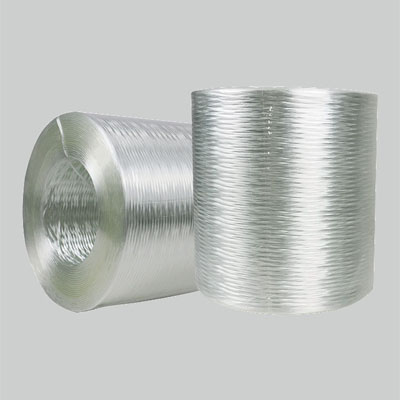Fiberglass roving is a versatile reinforcement material that finds applications across various industries due to its unique properties. Composed of continuous strands of glass fibers, fiberglass roving serves multiple purposes in different manufacturing processes. Let’s explore the common uses of fiberglass roving and its significance in various applications.
1. Reinforcement in Composite Materials
One of the primary uses of fiberglass roving is as a reinforcement material in the production of composite materials. The roving is often combined with resins, such as polyester or epoxy, to create strong and durable composites. These composites are widely used in industries like automotive, aerospace, marine, and construction for manufacturing parts with high strength-to-weight ratios.
2. Boat and Marine Industry
Fiberglass roving is extensively employed in the boat and marine industry for constructing hulls, decks, and other structural components. Its corrosion resistance and excellent strength properties make it an ideal material for ensuring the longevity and durability of marine structures.
3. Wind Energy Applications
The wind energy sector relies on fiberglass roving for the production of wind turbine blades. The high tensile strength and flexibility of the roving contribute to the structural integrity and efficiency of the blades, allowing them to withstand the forces exerted by wind and environmental conditions.
4. Automotive Manufacturing
Fiberglass roving is a key component in the automotive industry for reinforcing various parts, including body panels, bumpers, and interior components. Its lightweight nature and strength make it an attractive choice for enhancing vehicle performance and fuel efficiency.
5. Construction and Infrastructure
In the construction sector, fiberglass roving is used for reinforcing concrete and other construction materials. The addition of roving improves the structural strength, durability, and resistance to environmental factors, contributing to the longevity of buildings and infrastructure.
6. Pipe and Tank Manufacturing
Fiberglass roving plays a crucial role in the manufacturing of pipes and tanks for various industries. Its corrosion resistance and ability to withstand harsh chemical environments make it an ideal material for creating durable and long-lasting storage and transport systems.
Questions and Answers about Fiberglass Roving
Q: Can fiberglass roving be used in DIY projects?
A: Yes, fiberglass roving is suitable for DIY projects, especially those involving composite material construction, repairs, or custom fabrications.
Q: Is there a specific type of resin recommended for use with fiberglass roving?
A: The choice of resin depends on the application. Epoxy and polyester resins are commonly used with fiberglass roving, each offering different properties and curing characteristics.
Q: Can fiberglass roving be used for outdoor applications?
A: Yes, fiberglass roving is suitable for outdoor applications due to its resistance to environmental factors, making it a reliable choice for structures exposed to the elements.


